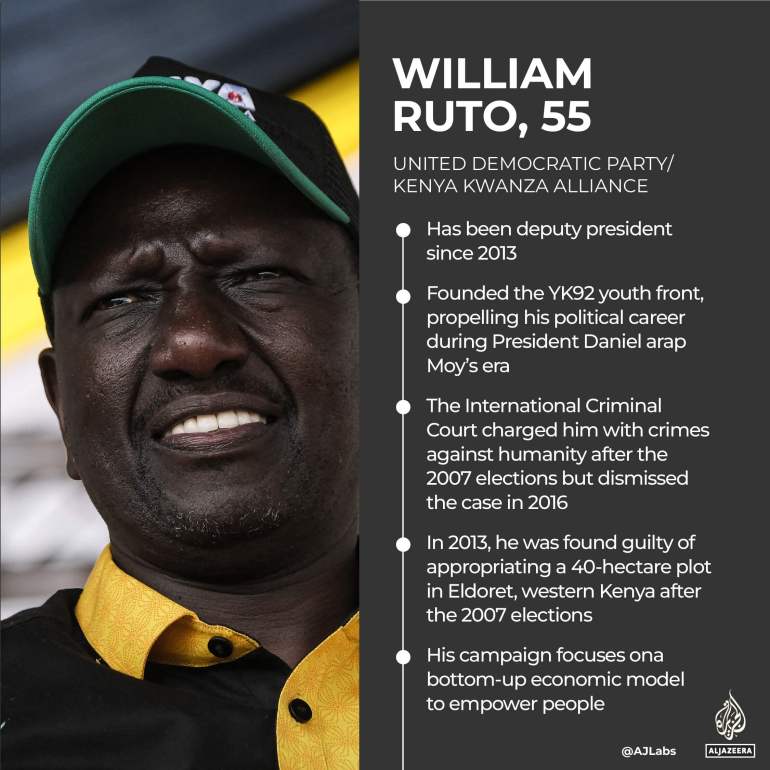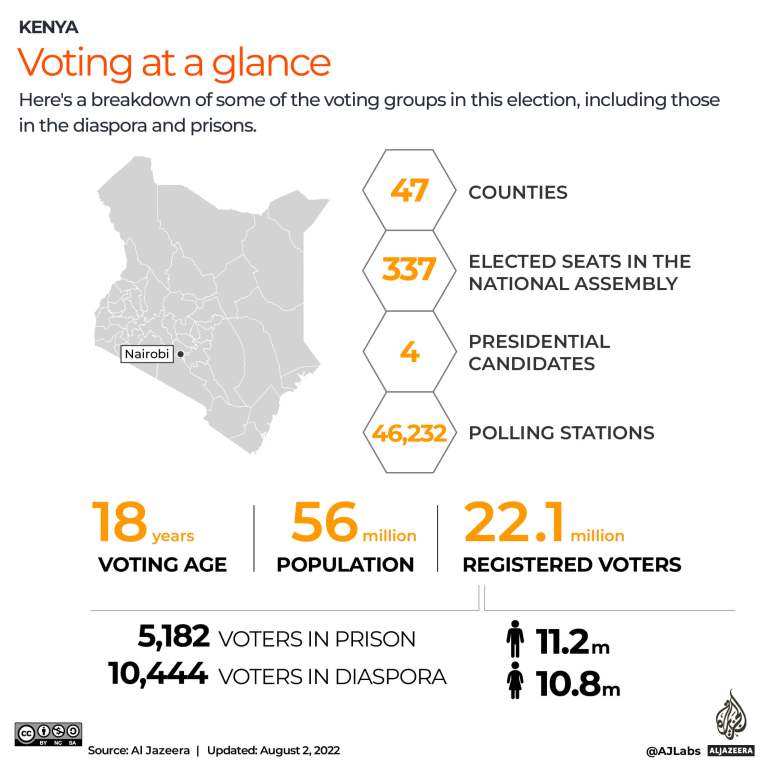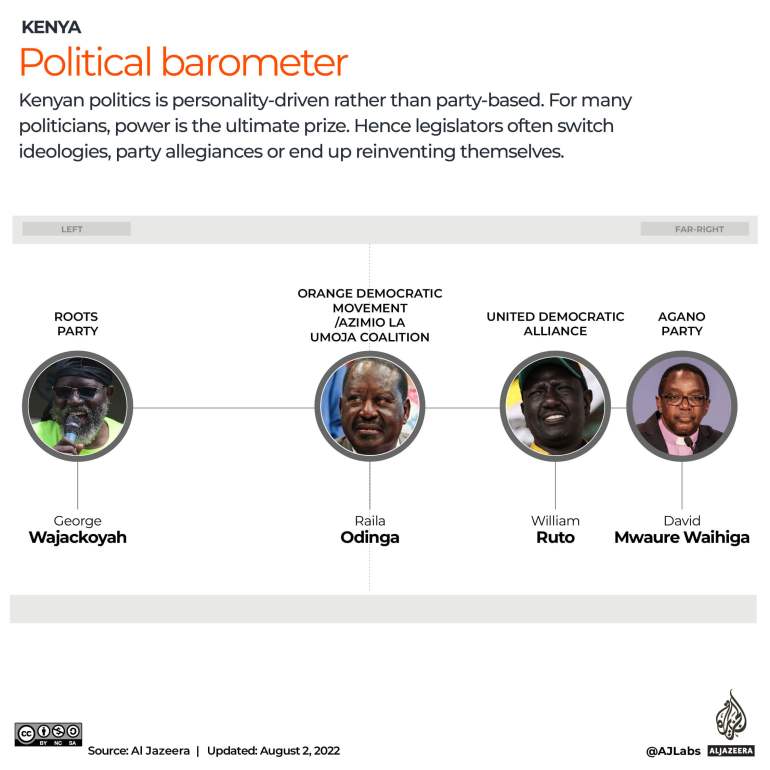Kenya, one of Africa’s most vibrant democracies, votes on Tuesday. Here’s what you need to know about the parties, leaders and key election issues.
Nairobi, Kenya – On August 9, Kenyans are heading to the polls to pick the country’s fifth president in what pundits say will be a hotly contested election.
Four candidates are competing for the country’s top position. William Ruto, having served two terms as deputy president in the current government, is eager to succeed his current boss, who he is feuding with.

Raila Odinga, who has unsuccessfully contested the presidency four times before, is his main challenger. He has the backing of the outgoing president, Uhuru Kenyatta, his former foe. Two other candidates, George Wajackoyah and David Mwaure, complete the list.

Besides the presidential election, people will also go to the polls to vote in governors, Members of the National Assembly, senators and Members of the County Assembly.
Twelve people will be nominated to the National Assembly, according to the constitution, to represent special interest groups including people with disabilities, youths and workers.

How do people vote?
Voting is done electronically in the second such election after a history of manual failures.
- Due to technological failures in the 2017 polls that led to the Supreme Court calling for a rerun of the presidential contest, there is a manual voters’ register that is usually sealed until needed but kept in the polling stations.
- After voting, the ballots are counted and results forms filled, then taken to the constituency tallying centres where results are collated and announced, before being taken to the county and national tallying centres.
- According to Justus Nyng’aya, an Independent Electoral and Boundaries Commission (IECB) commissioner, the body will transmit results via a public portal “as an image, not text”.

Declaring victory
To be declared winner in Kenya’s winner-takes-all electoral system, a presidential candidate has to receive more than half of all the votes cast in the election; and at least 25 percent of the votes cast in each of at least half of the counties.
According to the constitution, if no candidate is elected, a new election has to be held within 30 days after the previous one.
- Only candidates who received the highest and second highest votes tally are eligible to contest a new election.
- The candidate who receives the most votes in the new election shall be declared elected as president.
- A presidential election shall be cancelled and a new election held if a candidate for president or deputy president dies on or before the scheduled election date; or the president-elect dies before being declared elected.
IEBC chairperson Wafula Chebukati has said the commission is printing 22,120,458 ballot papers – the exact number of registered voters.

Ideology barometer
In Kenya, as in many parts of Africa, ideology politics are not the order of the day. Citizens are more inclined to wait for good governance and people-oriented projects, regardless of whether it comes from a socialist or capitalist government.

- Also, for many politicians, power is the ultimate goal so their ideologies are malleable and they often switch party allegiances or create them. Consequently, personalities drive politics on the continent, not parties.
- Raila Odinga, a longtime centre leftist who is famously known for campaigning for multi-party politics in Kenya, was a long-term foe of the current president, but is now the establishment candidate and slightly right of centre.
- Deputy President William Ruto is campaigning as an outsider in a centrist government and has adopted a relatively right-wing approach, with his populist Kenya Kwanza (Kenya First) movement as a campaign vehicle.
- On the extreme left of the spectrum is George Wajackoyah, a professor who wants to legalise marijuana, impose four-day working weeks and hang those convicted of corruption.
- To the extreme right is conservative clergyman David Mwaure, who completes the list.
